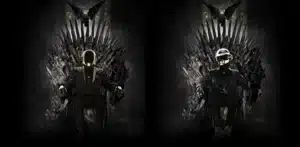Visualizing Data is a fantastic 1993 book by William Cleveland. The best thing about this 360-page book is that it contains numerous pictures that can be used to guide analysis. Visualizing Data is about visualization tools and methods that provide insight into the structure of data. There are graphical tools such as coplots, multiway dot plots, and the equal count algorithm. There are fitting tools such as loess and bisquare that fit equations, nonparametric curves, and nonparametric surfaces to data. But Visualizing Data is much more than just a compendium of valuable tools. Will you use Visualizing Data in your work?

Visualizing Data Summary
Visualizing Data conveys a strategy for data analysis that emphasizes the use of visualization to thoroughly examine the structure of data and verify the validity of statistical models fitted to the data. A picture is worth a thousand words. Visualizing Data also provides ideas and graphics on how to generate data visualizations in statistical packages, most often R, a free software with a large user community. Readers can download it right now and start the data visualization process.
The result of using these tools and strategies is to increase what you can learn from your data vastly. This book will help readers analyze data, and anyone who does that for a living should own ‘Visualizing Data’. Visualizing Data demonstrates this by reanalyzing numerous datasets from the scientific literature, revealing previously missed effects and inappropriate models fitted to the data.
By far, the most notable aspect of the book is that it presents numerous examples of data visualization. Therefore, someone who reads Visualizing Data will provide the reader with ideas and demonstrate how to visualize data. Visualizing data becomes more complex as it progresses. Beginning with data visualization techniques for univariate data. Visualizing Data ends with a treatment of high-dimensional data. It is virtually guaranteed that you will find a solution to your data visualization problems in the book.
The Accomplished William Cleveland
William S. Cleveland has been a Distinguished Professor of Statistics and a Courtesy Professor of Computer Science at Purdue University since January 1, 2004. Previously, Cleveland was a Distinguished Member of Technical Staff in the Statistics Research Department at Bell Labs. Bell Labs has long been a center of excellence for data analysis. They invented a computer programming language, called C, on which many statistical languages are based.
In the book Data Visualization, Cleveland has written two books, co-authored another, and one a user’s manual was The Editor of two books and a special issue of the Journal of the American Statistical Association He is the founder of the Graphics Section of the American Statistical Association, which means He led the group that successfully petitioned the American Statistical Association board of directors for approval.
Cleveland’s two books on data visualization have been reviewed in numerous journals from a diverse range of disciplines. The Elements of Graphing Data was selected for the Library of Science. J. Lodge reviewed it in Atmospheric Environment and wrote: “certain kinds of tendency toward bad graphics could be cured if as many authors as possible would not just read, but, in the words of the Anglican Prayer Book, `learn, mark, and inwardly digest’ this volume.” B. Gunter reviewed Visualizing Data in Technometrics and wrote: “This is a terrific book — in my opinion, a path-breaking book. Get it. Read it. Practice what it preaches. You will improve the quality of your data analysis.”
Cleveland and colleagues developed the trellis display, a framework for data visualization. A worldwide community of data analysts has adopted it as a result of its implementation in two software systems based on the S language for data analysis: the S-Plus commercial system and the R open-source system. It is not possible to overstate the importance of this achievement. Thousands of people across various disciplines use these computer programming languages.
Conclusion
Data Visualization is a book authored by a technical expert on data visualization for anyone who needs to visualize data for any reason. Therefore, this book applies across disciplines to anyone who has a dataset to visualize. There are many practical examples. Interestingly, the book is printed on thick paper so that the multi-color data visualizations.








